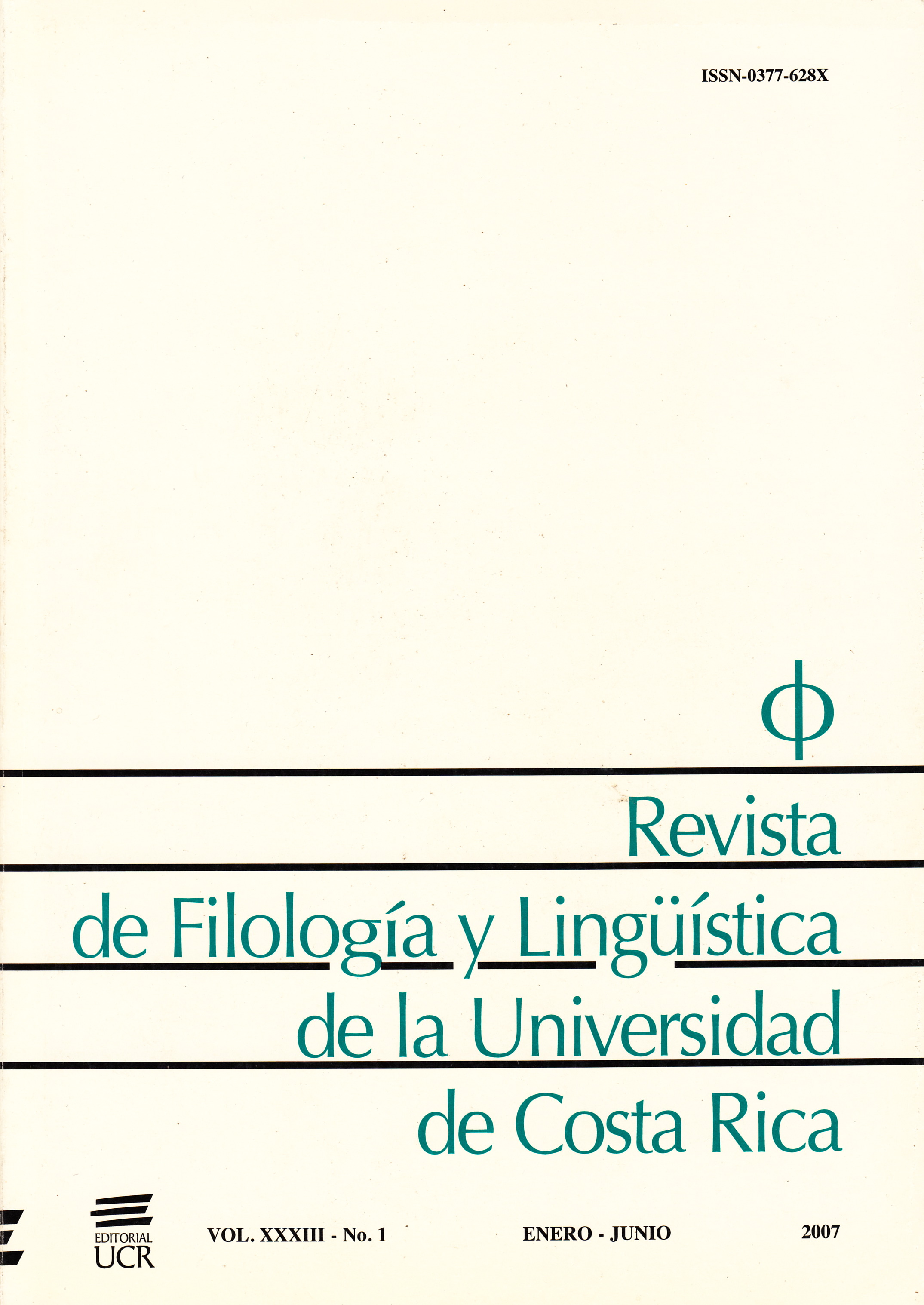Abstract
Este artículo estudia los errores gramaticales más frecuentes de 159 estudiantes universitarios de inglés como lengua extranjera. Los datos se tomaron de 8 grupos de composiciones que fueron escritas en clase o de tarea, como parte de las actividades del curso. Estas fueron evaluadas y los errores se clasificaron de acuerdo con una taxonomía y se calculó su frecuencia. Los resultados muestran que a pesar de que la frecuencia de ciertos errores aumenta y disminuye en forma aparentemente impredecible, los errores relacionados con la omisión del sujeto, la concordancia entre sujeto y verbo y las formas negativas son más co munes en los principiantes. Además, se observó que los errores en el uso de los artículos, las preposiciones y las formas verbales fueron los más frecuentes en todos los niveles.
Literaturhinweise
Barcroft, Joe. 2007. “When knowing grammar depends on knowing vocabulary: Nativespeaker grammaticality judgments of sentences with real and unreal words.” The Canadian Modern Language Review. 63 (3): 313- 343.
Brown, H. Douglas. 2000. Principles of language learning and teaching. Fourth Edition. New York: Longman.
Chodorow, M. et al. 2007. “Detecting of Grammatical Errors Involving Prepositions.” In Proceedings of the Fourth ACL-SIGSEM Workshop on Prepositions. Prague, The Czech Republic.
Cook, Vivian. 1993. Linguistics and second language acquisition. New York: Palgrave Publishers Ltd.
Corder, S. Pit. 1981. Error analysis and interlanguage. Oxford: Oxford University Press.
Dalgish, Gerard M. 1991. “Computer-Assisted Error Analysis and Courseware Design: Applications for ESL in the Swedish Context.” CALICO Journal. 9 (2): 39- 56.
Doughty, Catherine and Michael H. Long. 2003. The handbook of second language acquisition. Malden: Blackwell Publishing Ltd.
DeKeyser, Robert. 2003. Implicit and explicit learning. In Catherine J. Doughty and Michael H. Long (Eds.). The handbook of second language acquisition, 311-348.
Hamid, Obaidul. 2007. “Identifying second language errors: How plausible are plausible reconstructions?” ELT Journal. 61 (2): 107- 116.
Han, ZhaoHong. 2004. Fossilization in adult second language acquisition. Clevedon: Multilingual Matters Ltd.
Hasbún, Leyla. 2001. “Assessment of grammatical errors and pragmatic failure.” Revista de Filología y Lingüística. 27 (1): 249- 263.
(2007). “Evaluación de un curso de gramática del inglés: Insumo para la investigación.” Revista Electrónica Actualidades Investigativas en Educación. 7 (1): 1- 20.
Hughes, Arthur and Chryssoula Lascaratou. 1982. “Competing criteria for error gravity.” ELT Journal. 36 (3): 175- 182.
Hyltenstam, Kenneth and Niclas Abrahamsson. 2003. Maturational constraints in SLA. In Catherine J. Doughty and Michael H. Long (Eds.) The handbook of second language acquisition, 539-588.
Lewis, Michael. 1994. The lexical approach: The state of ELT and a way forward. Hove: Language Teaching Publications.
Salem, Ilana. 2007. “The lexico-grammatical continuum viewed through student error.” ELT Journal. 61 (3): 211- 219.
Selinker, Larry. 1972. “Interlanguage”. International Review of Applied Linguistics. 10: 209-

